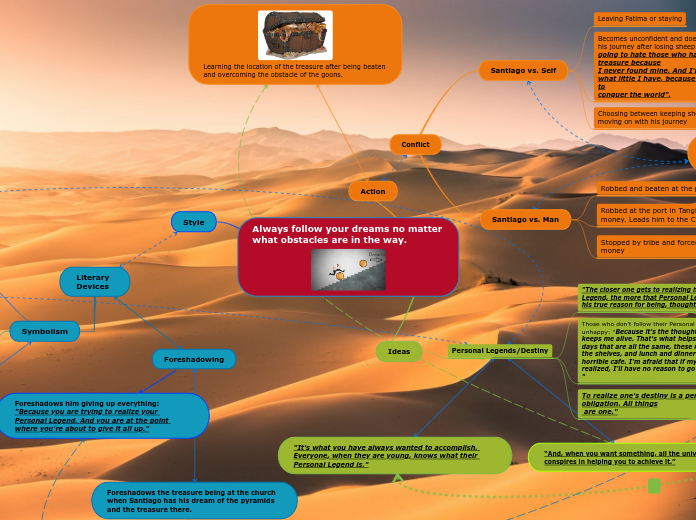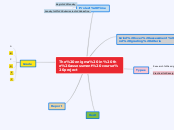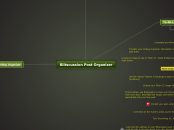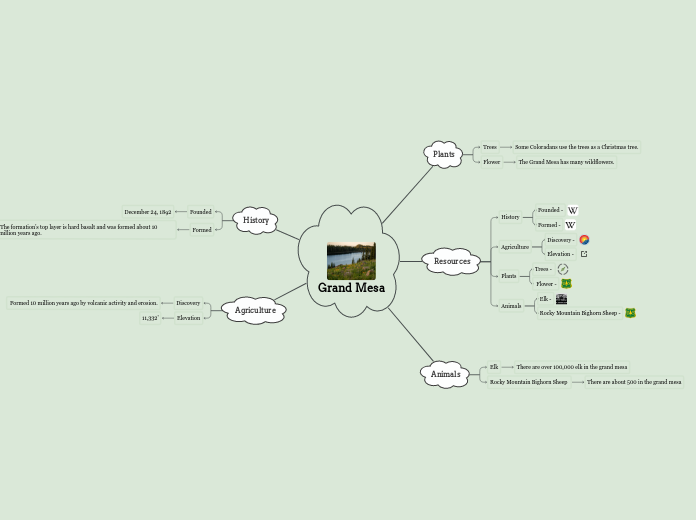W. (2017, May 19). How to Make Leather. Retrieved May 19, 2017, from http://www.wikihow.com/Make-Leather
Resources Used
Environmental Hazards of Leather. (n.d.). Retrieved May 19, 2017, from http://www.peta.org/issues/animals-used-for-clothing/leather-industry/leather-environmental-hazards/
How Linen is Made. (n.d.). Retrieved May 19, 2017, from https://www.decktowel.com/pages/how-linen-is-made-from-flax-to-fabric
Helmenstine, P. A. (n.d.). How to Make Nylon - Nylon Rope Trick. Retrieved May 19, 2017, from https://www.thoughtco.com/how-to-make-nylon-608926
Craft Woven From Graft. (n.d.). Retrieved May 19, 2017, from http://www.mylearning.org/from-wool-to-cloth/p-2738/
(n.d.). Retrieved May 19, 2017, from https://www.cotton.org/pubs/cottoncounts/story/importance.cfm
Cotton. (n.d.). Retrieved May 19, 2017, from http://www.madehow.com/Volume-6/Cotton.html
Silk. (n.d.). Retrieved May 19, 2017, from http://www.madehow.com/Volume-2/Silk.html
Environmental Impact. (n.d.). Retrieved May 19, 2017, from http://globalcommodities-silk.weebly.com/environmental-impact.html
Clothing
Linen
Flax plant
Flax is an annual plant, which means it only lives for one growing season.
After harvest, flax stalks are allowed to dry in open air for several weeks before they undergo threshing, or removal of seeds from the stalk by crushing open the dried seed pods. Hand threshing is usually achieved by simply beating the dried stalks until all the seed pods have been crushed, then shaking the seeds free.
This doesn't really affect the biodiversity.
Nylon
Plastic
Polymer
1. Use equal volumes of the two solutions. Tilt the beaker containing the 1,6-diaminohexane solution and slowly pour the sebacoyl chloride solution down the side of the beaker so that it forms the top layer.
2.Dip tweezers into the interface of the liquids and pull them up to form a strand of nylon. Continue to pull the tweezers away from the beaker to lengthen the strand. You may wish to wrap the nylon rope around a glass rod.
3.Rinse the nylon with water, ethanol or methanol to remove the acid from the nylon. Be sure to rinse the nylon before handling it or storing it.
There aren't any major harmful effects to the biodiversity that is caused by nylon, however the usage of plastic may be bad since they purposely make polymer for it to be used. It takes up a lot of space since factories are being built to make nylon. This involves in the loss of habitats of many animals.
Silk
Insect larvae
Cockroaches
Grasshoppers
There are many steps to get the silk fabric that we easily buy from the stores today.
Step #1. Only the healthiest moths are used for breeding. Their eggs are categorized, graded, and meticulously tested for infection. Unhealthy eggs are burned then the silkworms feed only on the leaves of the mulberry tree.
Step #2:When the silkworm starts to fidget and toss its head back and forth, it is preparing to spin its cocoon. The caterpillar attaches itself to either a twig or rack for support. As the worm twists its head, it spins a double strand of fiber in a figure-eight pattern and constructs a symmetrical wall around itself
Step #3:The natural course would be for the chrysalis to break through the protective cocoon and emerge as a moth. However, sericulturists must destroy the chrysalis so that it does not break the silk filament. This is done by stoving, or stifling, the chrysalis with heat.
Step #4:The filature is the factory in which the cocoons are processed into silk thread
Step #5:Reeling may be achieved manually or automatically. The cocoon is brushed to locate the end of the fiber. It is threaded through a porcelain eyelet, and the fiber is reeled onto a wheel. Meanwhile, diligent operators check for flaws in the filaments as they are being reeled.
Step #6:The end product, the raw silk filaments, are reeled into skeins
Step #7:Silk thread, also called yarn, is formed by throwing, or twisting, the reeled silk
Step #8:As the silk filaments are reeled onto bobbins, they are twisted in a particular manner to achieve a certain texture of yarn
Step#9:The silk yarn is put through rollers to make the width more uniform. The yarn is inspected, weighed, and packaged. Finally, the yarn is shipped to fabric manufacturers.
The process of making silk requires the killing of the larvae when the cocoon is boiled, because of this sericulture has been heavily criticized by the animal welfare and rights activists. The mulberry silkworm has been completely domesticated and cannot live without humans for their care and feeding.
No solution has been shown yet but however to prevent hurting the insects Gandhi promoted the cotton spinning machines, which do not directly involve hurting any living thing.
Silk for most places is not a local resource, so processing and transportation lead to pollution. Much of the silk in the US is from China and India
To clean silk many harsh and intensive treatments and chemicals are used, which can pollute the ground water. The process is also very labor intensive, so it requires many workers.
This fast-growing Paper Mulberry tree was introduced into many non-native areas. It quickly disrupted the native habitat; it became a highly invasive species and upset the natural ecosystem.
Also, Mulberry trees have shallow root systems so they are easily blown down. It is then necessary to cut down the tree and apply a herbicide to kill the roots. The roots of the trees are very aggressive and strong; they can cause problems with the drainage pipes. The timber is also relatively useless, other than the making of paper.
Stink bugs
Cotton
cotton plant
Gossypium herbaceum
Gossypium arboreum
Gossypium barbadense
Gossypium hirsutum.
Cotton is a part of our daily lives from the time we dry our faces on a soft cotton towel in the morning until we slide between fresh cotton sheets at night.
Cotton is a shrubby plant that is a member of the Mallow family. Its name refers to the cream-colored fluffy fibers surrounding small cottonseeds called a boll. The small, sticky seeds must be separated from the wool in order to process the cotton for spinning and weaving. De-seeded cotton is cleaned, carded (fibers aligned), spun, and woven into a fabric that is also referred to as cotton. Cotton is easily spun into yarn as the cotton fibers flatten, twist, and naturally interlock for spinning.
Cottonseed is mechanically planted by machines that plant up to 12 rows at a time. The planter opens a small furrow in each row, drops in seed, covers them, and then packs more dirt on top.
This can harm our biodiversity because the land is plowed under and soil is broken up and formed into rows to plant the cotton seeds and this is harmful because again, as I've said before some of the organisms habitats are being destroyed. Also, pesticides along with other chemicals are sprayed to keep bugs away, if any organism consumes the plants, that will be dangerous because eventually it will move up the food web/chain and reach humans. It's not good to have something toxic building up inside of us, since it can harm us.
Some of the effects are brain defects, cancer or any other damage inside our body.
Leather
Ostritches
Kangaroos
There are many steps to using animals for leather. The first step is to remove the kin from the flesh of the animals. Then you pull the flesh off the hide. You salt the skin next and soak it in water. You remove the skin hair from the skin and give the skin a final lime bath. Next step is tanning the leather, load the skin into large drums and add tanning agent to the drum. You add dye next and then rinse the leather. After the leather is dry and its softened you should apply a leather softening oil. Lastly you smoke the hide and apply the finish.
Raising animals for food and leather requires huge amounts of feed, pastureland, water, and fossil fuels. Animals on factory farms produce 130 times as much excrement as the entire human population, without the benefit of waste treatment plants. Although some leather makers say their products are “Eco-friendly,” turning skin into leather also requires huge amounts of energy and dangerous chemicals, including mineral salts, formaldehyde, coal-tar derivatives, and various oils, dyes, and finishes, some of them cyanide-based. Tannery effluent contains large amounts of pollutants, such as salt, lime sludge, sulfides, and acids. The process of tanning stabilizes the collagen or protein fibers in skins so that they actually stop biodegrading—otherwise the leather would rot right off your feet.People who work in and live near tanneries suffer too.
Many die from cancer possibly caused by exposure to toxic chemicals used to process and dye the leather. The production of leather hurts animals, the environment, and the workers who manufacture it. The only ones who benefit are people who profit from the misery and suffering of others.
Goats
Sheeps
Alligators
Snakes
Pigs
Fur
Animals
seals
Chinchilla
Otter
Fox
Rabbit
Mink
Muskrat
Beaver
Buffallo
Cows
Coyotes
Animals are killed and their fur is used to sell. They peel the animals skin and wash it thoroughly, after that they carefully use the good fur and clean it. Then they are sold to factories and they're turned into clothes, shoes carpets etc.
This harms the biodiversity because innocent animals are being killed just because of their fur.
This also ruins the food chain, eventually there will be limited animals left, although the meat is used but if they kill so many of them, the animals that they're suppose to eat will have an increase in population. That's because they aren't being eaten.
Wool
Sheep
Rambouillet
Delaine Merino
Debouillet
Once a year, usually during the warmer weather, sheep are gathered for shearing. Shearing is when the animal’s fleece is cut off; this does not hurt it in any way. Variations of between 6 and 18 pounds (2.7 and 8.1 kilograms) in the weight of fleeces have been recorded
The raw wool is then graded according to the quality of the fibres, which varies according to where on the animal the wool has come from
Before yarn can be spun, the raw wool has to be scoured to remove dirt, grease and sweat.Fleeces are still scoured today and this involves three processes, washing, rinsing and drying. The washing is done in a series of alkaline baths and then the fleece is rinsed and squeezed through rollers to dry it. Lanolin, a kind of grease, is the by-product of this process and it is purified for use in the manufacture of cosmetics, soap and other household products.
Combing takes out the shorter fibres, also called noils, and lines the longer fibres up parallel with one another in a 'sliver'. This is then wound into a ball, called a 'top', which is ready for spinning.
The basic principles of weaving have not changed, although the machinery used to complete the process has. Two sets of threads are used in weaving. One, the warp, is put onto the loom in parallel lines and the other, the ‘weft’, is taken between the warp threads.
Fulling mills always had tentergrounds nearby. Tenters were rows of frames to which the fulled cloth was attached by tenterhooks after rinsing, to stretch and dry it
They use many types of transportation(planes, boats, cars, trucks, trains) in poor countries they use camels.
Making wool is harmful to the biodiversity because these animals are being used just to make clothing. Also some animals lose their habitats because factories are being built, places where the process of wool is happening and the animals have to move, or they die. There should be another way to go through this process.
Booroola Merino
American Cormo









